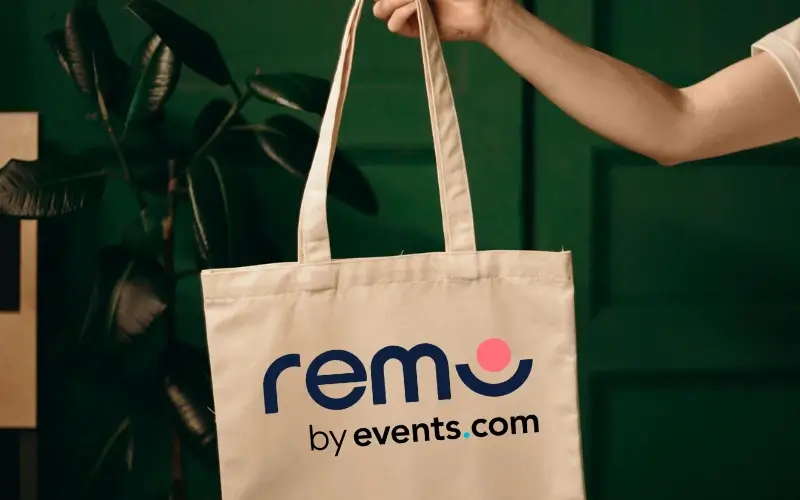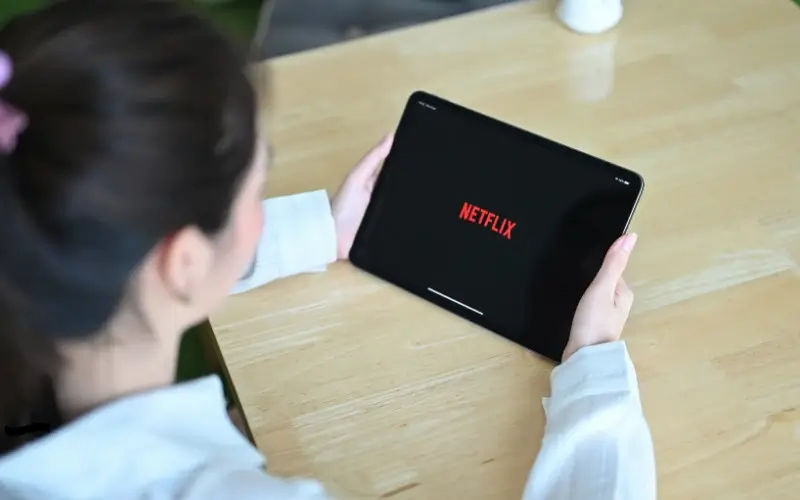The Complete Guide to Designing Optimized Event Sponsorship Packages


You can host an unforgettable event, online or in person, but if your event sponsorship packages don’t convert, everything else becomes an uphill battle. Many organizers build sponsorship offers without really understanding what they’re offering or what it’s worth. As a result, sponsorship ends up feeling like a simple visibility exchange, such as a logo here, a mention there, instead of a true strategic partnership. The result? Missed deals, mismatched expectations, and money left on the table.
This guide shows you how to stop guessing and start building sponsorship packages that attract the right partners, on any stage or virtual event platform. You’ll learn how to value your assets with confidence, turn them into goal-aligned packages, and design flexible tiers that feel irresistible to sponsors. More importantly, you’ll learn how to present your event as a partnership opportunity, one where brands see measurable ROI, and you see consistent, scalable event revenue.
{{table-of-contents}}
Why Sponsorship Package Tiers Matter for Modern Events

At its core, a sponsorship package is a collection of benefits you offer to a brand, such as visibility, access, and experiences, in exchange for financial or in-kind support. Tiers are how you organize those benefits into clear levels of partnership. They turn a long list of possibilities into an easy, visual roadmap for sponsors, showing what each level includes and how the value increases with every tier.
Tiers make sponsorships easier for everyone, bringing structure, clarity, and flexibility to both sides of the partnership.
- They provide structure and predictability: Tiers make it easier to manage deliverables and stay consistent with what organizers have promised.
- They create clarity: Tiers give a clear sense of what’s included at each level and how value increases across tiers.
- They enable scalability: You can engage partners of different sizes and budgets without rebuilding packages from scratch.
- They encourage creativity: Tiers aren’t cages; they’re frameworks for conversation. Once your structure is in place, you can still adapt, customize, and innovate within it.
The clarity of tiers builds confidence, while the flexibility behind them builds long-term relationships.
Step 1: How to Value Event Sponsorship Assets with Confidence

Before you can design a single sponsorship package, you need to understand what you’re actually offering, and what it’s worth. Every element of your event holds potential value: your audience size and demographics, stage time, branding placements, access to data, digital touchpoints, even the atmosphere you create through activations or networking experiences.
1. Identify your sponsorship assets
Think of every opportunity a sponsor has to connect with your audience as an asset. These can be:
- Audience assets: your attendee count, online viewership, or community reach.
- Brand visibility assets: logos on event materials, banners, digital signage, or livestream backdrops.
- Experience assets: product demos, workshops, lounge sponsorships, or interactive activations.
- Digital assets: event app banners, push notifications, social mentions, or data dashboards.
- Access assets: introductions to key attendees, VIP areas, or speaking opportunities.
Each of these touchpoints carries measurable value. The goal is to see your event not as a single product, but as a portfolio of assets you can later package into tiers.
2. Measure the worth of each asset

Once you’ve listed your assets, assess their value using four core filters:
- Reach: How many people will actually see or interact with this asset? A session sponsorship reaching 300 attendees might be worth more than signage seen by thousands but ignored.
- Quality: Who are those people? A niche audience that matches the sponsor’s target market (for example, healthcare executives or tech startups) may justify a higher rate.
- Exclusivity: Is this benefit shared among several sponsors, or reserved for one? The more exclusive an opportunity, the higher its perceived value.
- Cost to deliver: What will it take to fulfill the promise? Production, printing, staff time, technology, all factor into whether an asset is cost-effective or overpriced to deliver.
Together, these filters give you a grounded starting point, an internal valuation system based on logic rather than guesswork.
3. Benchmark against similar events
Internal logic matters, but external perspective refines it. Review competitors or similar-scale events to see what they charge for comparable assets.
- Look for events with similar audience sizes, industries, and prestige levels.
- Identify how they structure and price their sponsorship tiers.
- Use these rates as baseline benchmarks, not as templates.
This market comparison keeps your pricing realistic. If your packages are far below the norm, you risk undervaluing your event. If they’re too high, you’ll face unnecessary resistance. Benchmarking helps you position yourself credibly in the marketplace.
4. Build your value base
With internal assessments and external benchmarks in hand, calculate a value base for each asset, an estimated range that reflects both its impact and cost to deliver. You don’t have to attach a final price yet; this step is about understanding relative worth. For example, a main-stage logo placement might be valued at three times more than a digital app banner, or a speaking slot could rank higher than a booth sponsorship because of engagement depth.
Having this hierarchy of value lets you design balanced sponsorship tiers later on, where benefits align with price points and every package feels fair.
5. Prioritize your highest-value assets
Once your valuations are complete, identify which assets deliver the strongest visibility, engagement, or exclusivity. These are your premium offerings, the elements that will anchor your top-tier sponsorship packages.
Knowing which assets carry the most weight helps you lead with confidence, spotlighting high-impact opportunities in your proposals while still offering balanced options for smaller sponsors.
Use valuation to build credibility and negotiation power
Realistic valuations don’t just protect you from underpricing; they give you credibility. When your pricing is backed by data and logic, it’s easier to explain and defend.
Sponsors trust organizers who can clearly articulate why a certain benefit costs what it does. Saying, “This placement reaches 10,000 qualified attendees and requires X setup time,” sounds far more credible than quoting a flat figure with no reasoning.
That transparency turns pricing into partnership. You’re not just selling a space; you’re showing the measurable value behind it. This credibility makes negotiations smoother, faster, and more professional. When you know exactly what your event’s assets are worth and why, you lay the groundwork for sponsorship packages that feel fair, strategic, and impossible to ignore.
Step 2: How to Build a Menu of Sponsorship Opportunities That Sell

Once you’ve valued your assets, the next step is to turn them into something sponsors can actually see and choose from — a menu. A well-built menu of sponsorship opportunities transforms scattered opportunities into a clear, organized set of options that sponsors can browse, compare, and combine.
1. Organize by Event Phase
Start by sorting your sponsorship assets by when and how they appear within the event journey:
- Pre-Event Exposure: early visibility through event registration-page logos, pre-launch social posts, promotional emails, or sponsor mentions in press releases.
- On-Site or Live Activations: physical spaces and experiences such as branded stages, lounges, coffee bars, workshops, demo pods, or signage placements.
- Digital / Hybrid Event Touchpoints: event-app banners, push notifications, livestream pre-rolls, virtual booths, or leaderboard mentions for online participants.
- Post-Event Opportunities: inclusion in recap videos, thank-you emails, highlight reels, or gated recordings where sponsor logos and messages live beyond the event.
Dividing your menu this way helps sponsors visualize the full life cycle of exposure, before, during, and after the event, and makes it easier to match benefits to their event marketing objectives.
2. Build Goal-Aligned Sponsorship Options
Not every sponsor measures success the same way. Some want impressions, others want leads or thought-leadership positioning. Your menu should reflect those different outcomes.
Lead-Generation Focused
- QR-code scans, attendee matchmaking, or lead-capture app access.
- Opt-in contact lists for qualified follow-up.
Brand-Awareness Focused
- High-visibility placements such as stage branding, app splash screens, or venue signage.
- Frequent impressions through social media event promotion shout-outs or pre-event promotions.
Thought-Leadership Focused
- Sponsored sessions, co-branded whitepapers, or hosted panels where the sponsor’s expertise adds value rather than just visibility.
Designing options around specific goals ensures that every line item on your menu delivers clear event ROI to a certain type of sponsor.
3. Tag Each Item with Key Information
To make your menu actionable, label every opportunity with a few practical data points:
- Reach: estimated audience or impression count.
- Exclusivity: number of sponsors sharing the space or placement.
- Delivery Effort: the cost and logistics required on your end.
These tags keep your internal planning realistic and help sponsors understand what drives pricing differences.
4. Add Modular and À La Carte Options
Not every sponsor fits neatly into a tiered package, some prefer to hand-pick what matters most. That’s where modularity comes in.
Create an à la carte section that allows sponsors to mix and match smaller-scale items to build their own experience:
- Mobile App Ads: splash screens, banner placements, or push notifications.
- Branded Networking Moments: sponsored coffee bars, cocktail hours, or meet-ups.
- Content Features: sponsored blog posts, interviews, or newsletter spotlights.
- Digital Real Estate: virtual-platform login screens, interactive booth placements, or leaderboard mentions.
This approach widens your potential sponsor base, accommodating both major brands seeking premium exposure and smaller partners looking for targeted engagement.
5. Connect Back to Your Value Base
Every item on this menu should trace back to the valuations you established earlier. Each price point, visibility level, and exclusivity tag is grounded in logic, not guesswork. When sponsors see that structure, they recognize professionalism, and that builds confidence before any negotiation begins.
Step 3: How to Design and Price Event Sponsorship Tiers (With Flexibility Built In)

Once you’ve created a clear menu of sponsorship options, the next step is to shape those items into structured, scalable tiers that feel both logical and fair. Tiers turn a long list of opportunities into an easy-to-understand roadmap, helping sponsors instantly see what level of partnership best fits their goals.
1. Build Logical, Layered Tiers
Start by grouping your menu items into packages that escalate naturally in both value and visibility. The classic structure still works—Bronze, Silver, Gold, and Platinum—but the difference lies in how intentionally you build each one.
Each level should feel like a clear step up from the one before it, more reach, higher engagement, or greater exclusivity, so sponsors instantly see the logic behind the increased pricing.
2. Highlight Exclusivity and Scarcity
Scarcity drives perceived value. Limit the number of top-tier or exclusive slots to keep your offerings special, one presenting sponsor, three Gold sponsors, and so on. Make sure exclusivity is meaningful: a Platinum sponsor shouldn’t share the same benefits as a Gold one. When each level has privileges only available at that tier, the structure feels authentic rather than inflated.
3. Balance Pricing with Fair Value
Use the valuations you established in Step 1 to set tier prices that make sense. The total value of items in each package should exceed the cost of buying them individually, this makes the bundle feel rewarding while still profitable for you. Position early-commit discounts or loyalty pricing to reward returning sponsors, and always confirm that your top tiers reflect both the exclusivity and delivery effort involved.
4. Keep Flexibility in the Framework
Tiers create structure, but adaptability keeps relationships strong. Not every sponsor will fit neatly into your predefined packages, so treat your tiers as a starting point, not a finish line.
- Small adjustments: Swap one benefit for another if it better suits a sponsor’s objectives (for instance, replace a booth with an extra speaking opportunity).
- Add-ons: Offer modular extras drawn from your à la carte menu for brands wanting a hybrid approach.
- Goal-based tailoring: Awareness-focused sponsors may prioritize stage branding or app banners, while lead-generation sponsors care more about contact data or interactive demos.
- Segmented outreach: When presenting tiers, highlight the benefits most relevant to that sponsor type, show them you understand their goals.
This kind of adaptability turns a static sponsorship chart into a collaborative toolkit. It shows sponsors that you’re not just selling packages; you’re building partnerships.
5. Make Every Tier Meaningful
Even your entry-level sponsorship should deliver something tangible, like visibility that counts, not fine-print logo placements. When every package feels purposeful, you build satisfaction across the board, increasing the likelihood of renewals and long-term relationships.
Tie your pricing back to your initial valuations. When your pricing, exclusivity levels, and deliverables are based on actual data, not guesswork, sponsors can see that your packages make sense and aren’t random. That transparency helps them trust your structure before they even sign.
Learn More: Sponsor Genius Bar — The Event Sponsorship Course for Organizers
Ready to master event sponsorship?
If you’ve ever wished for a clearer, more confident way to approach event sponsorship, this is it.
Sponsor Genius Bar is an immersive learning experience built for event organizers who want to turn sponsorship from guesswork into a repeatable, revenue-driving system. Part course, part coaching, and part community, it’s designed to help you:
- Identify your true sponsor value and price your assets with confidence.
- Build professional, goal-aligned sponsorship packages that convert.
- Pitch with clarity and close more deals, consistently.
Taught by two of the industry’s top sponsorship experts, the program blends practical strategy with hands-on support and proven tools. You’ll leave with a system that works, and a community that keeps you accountable long after the course ends.
Join Sponsor Genius Bar and start turning sponsorship potential into measurable results.
Common Sponsorship Package Mistakes to Avoid

Even the best sponsorship plans can fall short if the fundamentals aren’t right. Here are some of the most common pitfalls organizers face, and how to avoid them.
1. Pricing Before Asset Valuation: Jumping straight to package pricing without first understanding what each asset is worth is the fastest way to lose credibility. Sponsors will sense when numbers feel arbitrary. Always build from a solid valuation foundation so your pricing is transparent, fair, and defensible.
2. Weak Lower Tiers with Minimal Benefits: Your entry-level sponsorships set the tone for the entire structure. If they offer little value, they won’t convert, and they’ll make higher tiers harder to justify. Ensure even your smallest package delivers real exposure or engagement that sponsors can measure.
3. Overselling Exclusivity or Duplicating Benefits: Exclusivity only has power when it’s genuine. Promising the same “exclusive” benefits to multiple sponsors erodes trust. Keep your commitments clean and documented, and make sure no benefit overlaps unless explicitly stated.
4. Making Packages Too Rigid to Customize: Structure helps you sell efficiently, but rigidity kills relationships. Sponsors have different goals, so your packages should have space for adjustments, swaps, add-ons, or tailored activations. Flexibility signals professionalism and partnership.
5. Skipping ROI Tracking or Post-Event Feedback: Sponsors invest for outcomes, not exposure alone. If you can’t prove value, they won’t return. Always capture engagement data, impressions, and qualitative feedback to build post-event reports. These reports are your best tools for renewals and long-term growth.
A strong sponsorship program is about credibility, clarity, and consistency. Avoiding these common mistakes ensures your packages feel professional, your sponsors feel heard, and your partnerships last beyond a single event.
Quick Optimization Checklist for Stronger Sponsorship Packages
Before finalizing your sponsorship packages, run through this quick self-review to ensure every detail holds up under real-world scrutiny:
- Have all assets been properly valued? Each benefit should have a clear, data-backed reason for its price.
- Are premium benefits limited and exclusive? Scarcity builds value, so keep top-tier privileges truly unique.
- Do tiers show clear value progression? Sponsors should instantly see how benefits grow from one level to the next.
- Can smaller sponsors customize their participation? Offer flexibility through swaps, add-ons, or à la carte options.
- Is post-event reporting included in the offer? Every package should include a plan for
Strong sponsorship packages are built like great event experiences — structured, flexible, and measurable. If your checklist hits all five points, you’re ready to pitch with confidence.
Build Sponsorships That Last
Strong sponsorships are built on structure, data, and trust. When you value your assets realistically, design clear and flexible event sponsorship packages, and deliver measurable ROI, you turn one-time deals into long-term partnerships.
Whether your event is in-person, virtual, or hybrid, the goal remains the same: create meaningful connections that benefit both your brand and your sponsors. With the right framework, your sponsorship strategy becomes not just a revenue stream, but a relationship engine.
If you’re ready to bring your sponsorship strategy to life, Remo makes it easy. Our interactive virtual event platform helps you host immersive experiences that sponsors love, complete with branded spaces, data insights, and engagement tools that prove real ROI.
From hybrid conferences to virtual expos, Remo helps you design sponsorship activations that deliver both visibility and value. Book a demo to see how Remo helps you design sponsorship activations that deliver both visibility and value, from hybrid conferences to virtual expos and more.
Frequently Asked Questions About Event Sponsorship Packages
1. What is the difference between sponsorship packages for virtual, hybrid, and in-person events?
Virtual events focus on digital visibility, in-person events emphasize physical presence, and hybrid events combine both, offering sponsors flexible exposure across live and online audiences.
2. How do I find and approach the right sponsors for my event sponsorship packages?
Identify brands that share your audience, research their goals, and personalize your outreach. Lead with outcomes, like leads or engagement, instead of generic visibility offers. Discover how to do this and more in our exclusive Sponsor Genius Bar program
3. How do I measure ROI from my event sponsorship package?
Track engagement, visibility, and leads through event apps, QR codes, and analytics. Compare results to sponsor goals to prove value and secure renewals.







.webp)




















